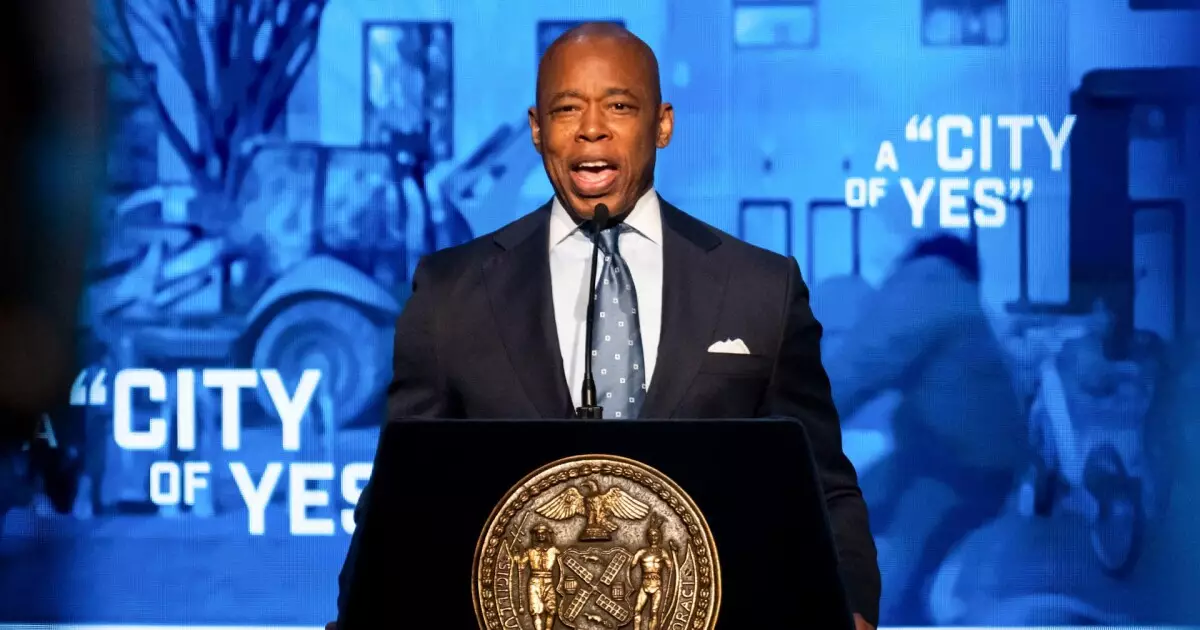New York City Mayor Eric Adams has recently unveiled a proposed budget of $114.5 billion for the upcoming fiscal year. This budget represents a marked shift in the administration’s approach to fiscal management, particularly concerning the city’s significant expenses related to migrant services and social programs. This article delves into the nuances of the proposed budget, the implications of spending priorities, and the broader economic context in which these financial decisions are being made.
The proposed budget signifies an increase of over $2.5 billion compared to the current budget approved in June. Importantly, it is the first budget under Adams’ leadership that does not aim to uncover savings within city agencies or propose cuts. This change can be attributed to what Adams describes as effective fiscal management and a flourishing economy. Yet, critics argue that this new spending plan reflects years of overly cautious budgetary practices rather than an authentic financial renaissance.
The increase in proposed spending has led to mixed reactions. Supporters view this as a necessary investment in public services, especially as the city navigates complex challenges like the influx of migrants and rising homelessness. However, detractors caution against potential budgetary overreach, particularly in light of projected deficits that loom in the coming years.
A critical factor in this budget is the city’s financial outlay for services related to migrants. Over the past 18 months, New York City has seen an influx of over 230,000 migrants, leading to substantial expenses for shelters and services. Initially, the city anticipated spending up to $12 billion by July 2024, but the actual costs have turned out to be significantly lower—around $6.91 billion by the end of 2023. This realization has provided a crucial buffer in the budget, allowing for increased allocations to other areas.
Adams has cited various measures taken to manage these expenses, including implementing time limits on shelter stays and renegotiating contracts with service providers. These strategies have reportedly led to a decrease in the number of migrants residing in city-funded shelters, indicating a more controlled but responsive approach to migrant services.
Mayor Adams has predicted an increase of $3.1 billion in tax revenue, thanks primarily to robust business tax receipts. The optimistic forecasts extend into tourism, with the expectation that visitor numbers will rebound to pre-pandemic levels by 2025. Adams’s projections suggest a positive trajectory for the city’s economy, but this optimism must be tempered with caution—especially given the slower growth rate of property tax revenue compared to that of the pre-pandemic years.
Looking ahead, the city is facing significant budget deficits projected at $4.2 billion for fiscal year 2027, which raises questions about the sustainability of the current budget strategy. Addressing these potential shortfalls and maintaining a balanced approach to future budgets will be critical for the city’s financial health.
Adding complexity to the budgetary landscape is the political context. As Adams runs for reelection amid serious legal challenges, the budget’s ambitious nature could be scrutinized through a political lens. While Deputy Mayor Fabien Levy has expressed confidence in the city’s ability to secure continued federal support, uncertainty remains high regarding potential policy shifts that could arise with a new administration in Washington.
One proposal Adams has put forth is the “Axe the Tax” initiative, which seeks to eliminate city income taxes for low-income families. Supporting this initiative could indicate a commitment to easing the financial burden on the city’s most vulnerable residents, but it also raises questions about funding other essential services in the face of already projected deficits.
The proposed budget by Mayor Eric Adams reflects a blend of cautious optimism and underlying challenges. While the boost in spending can be seen as an opportunity to address pressing social needs, it must be carefully balanced against long-term fiscal sustainability. The city is at a pivotal junction; the decisions made now will undoubtedly resonate for years to come.
As New York City navigates this intricate fiscal landscape, the crucial task ahead will be to ensure that financial optimism does not overshadow the need for prudent, equitable governance. The engagement of community stakeholders, transparent budgetary processes, and responsive fiscal policies will be vital in shaping a resilient future for one of the world’s most dynamic cities.

